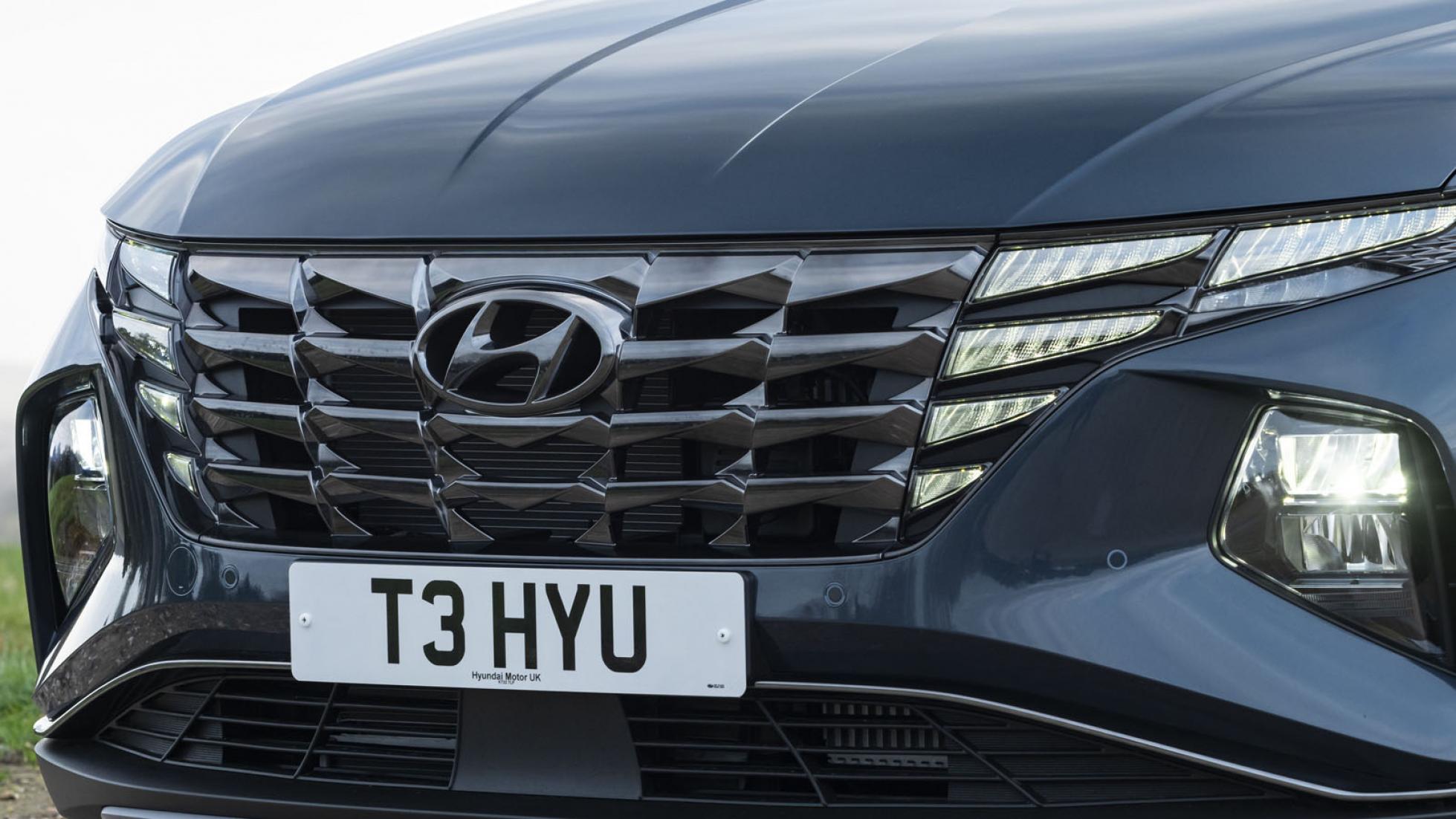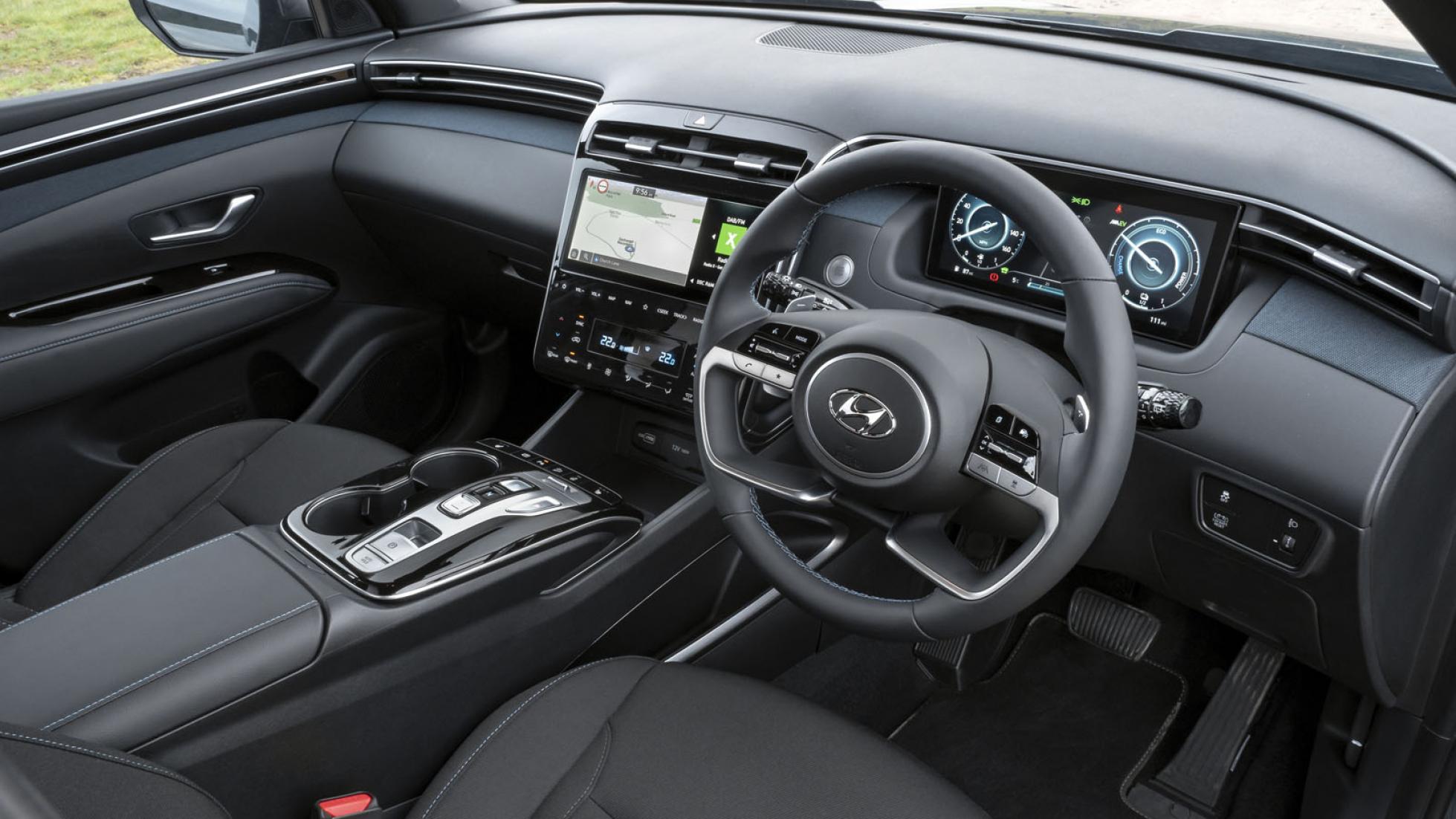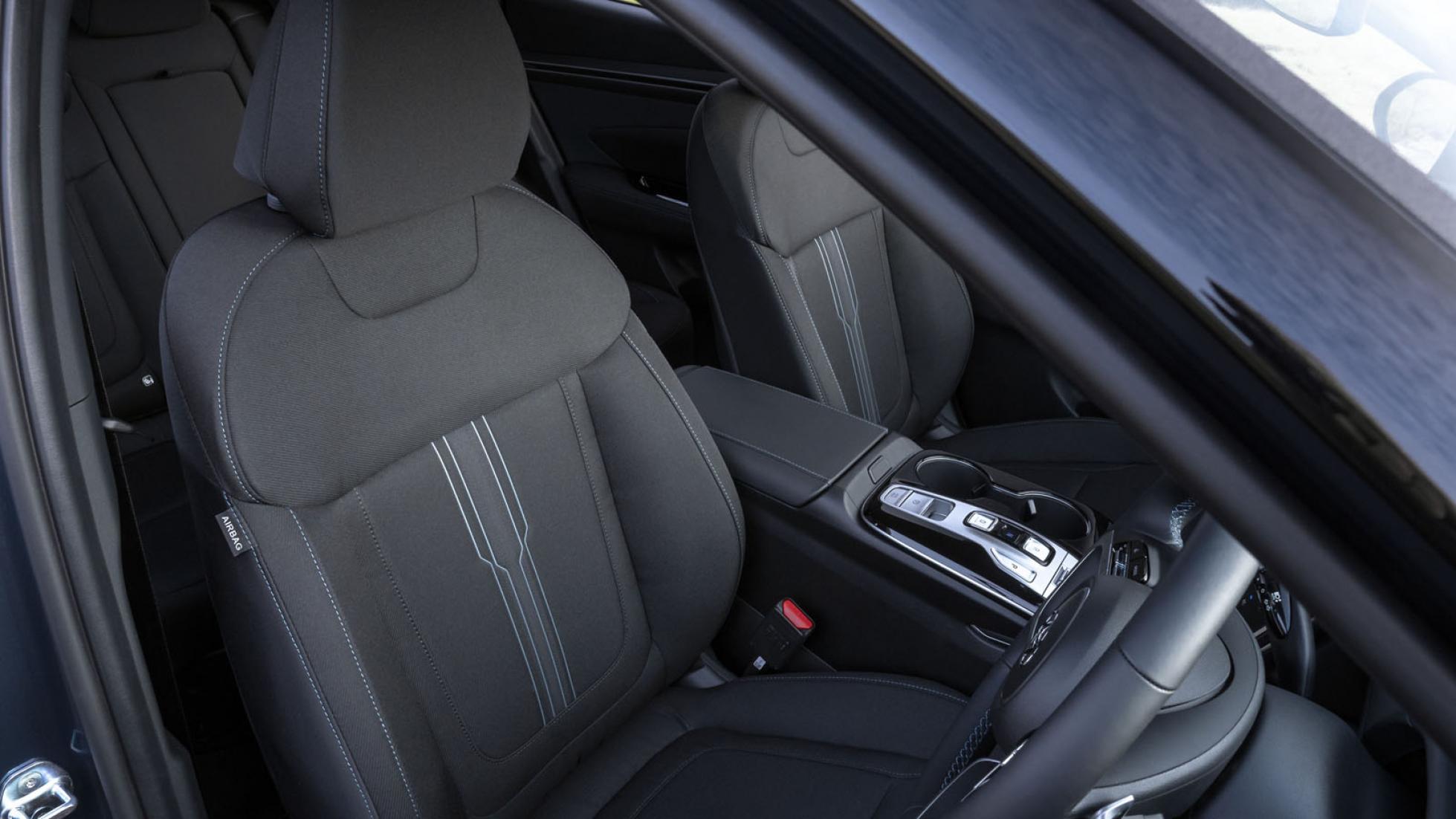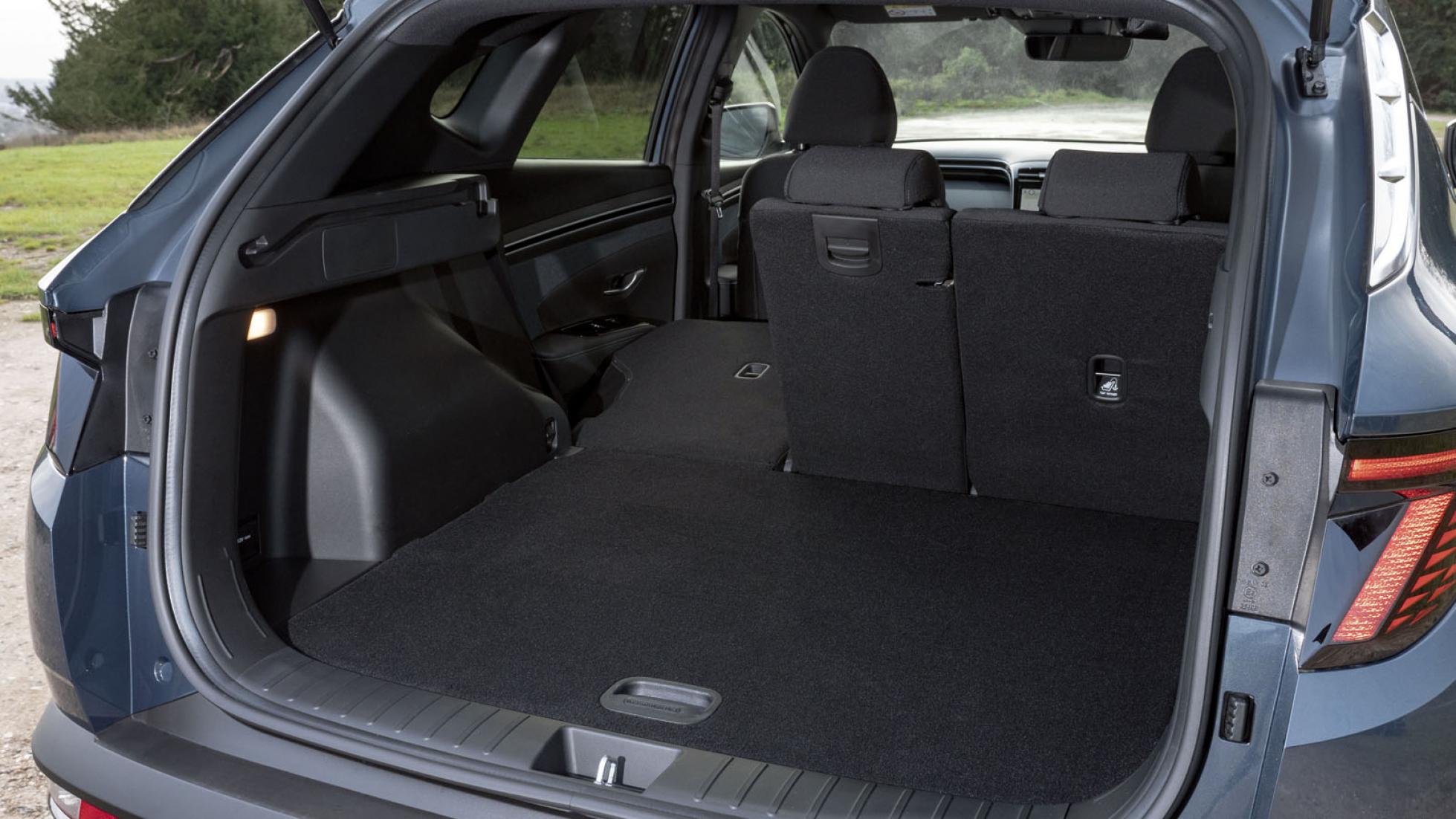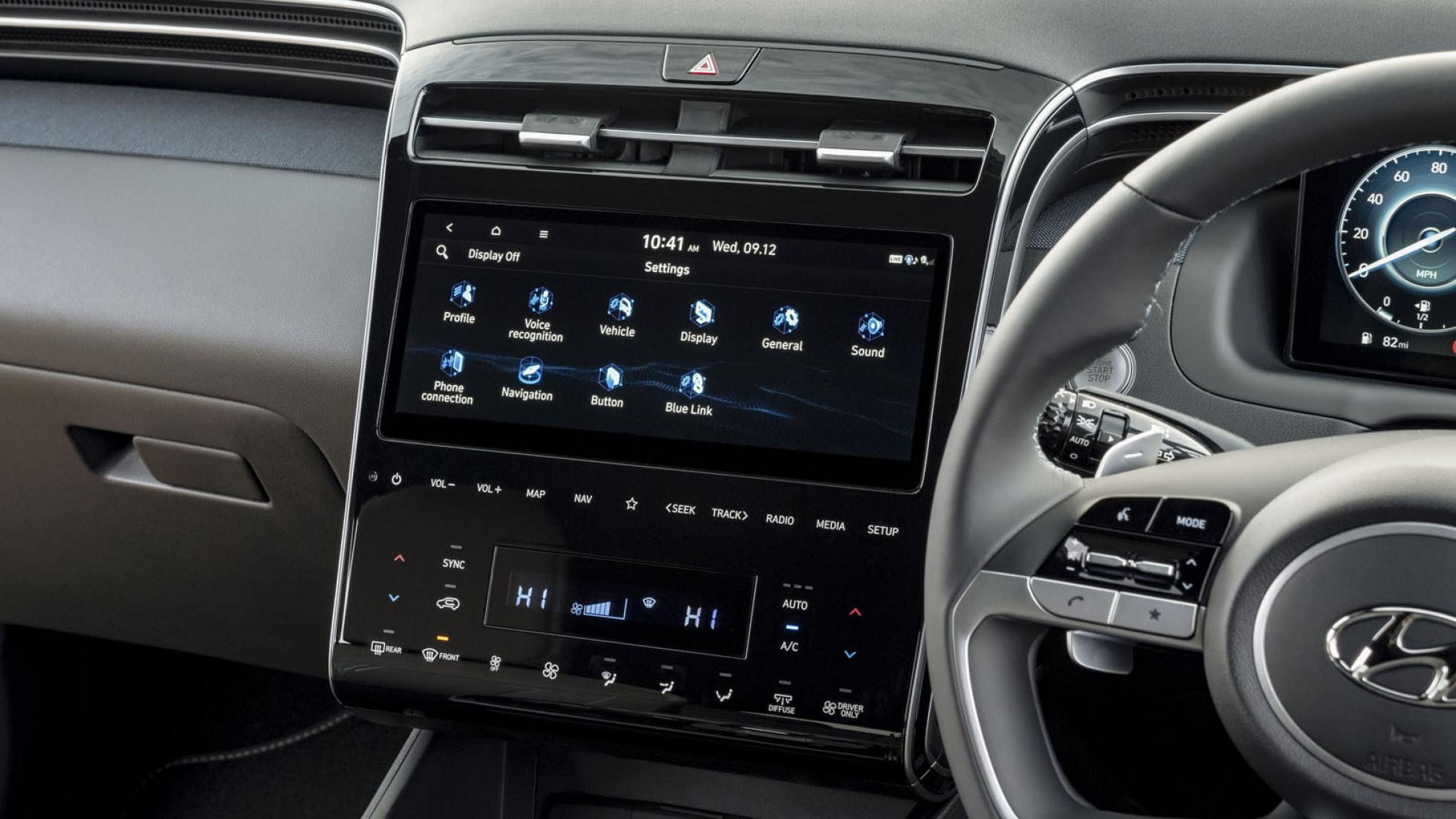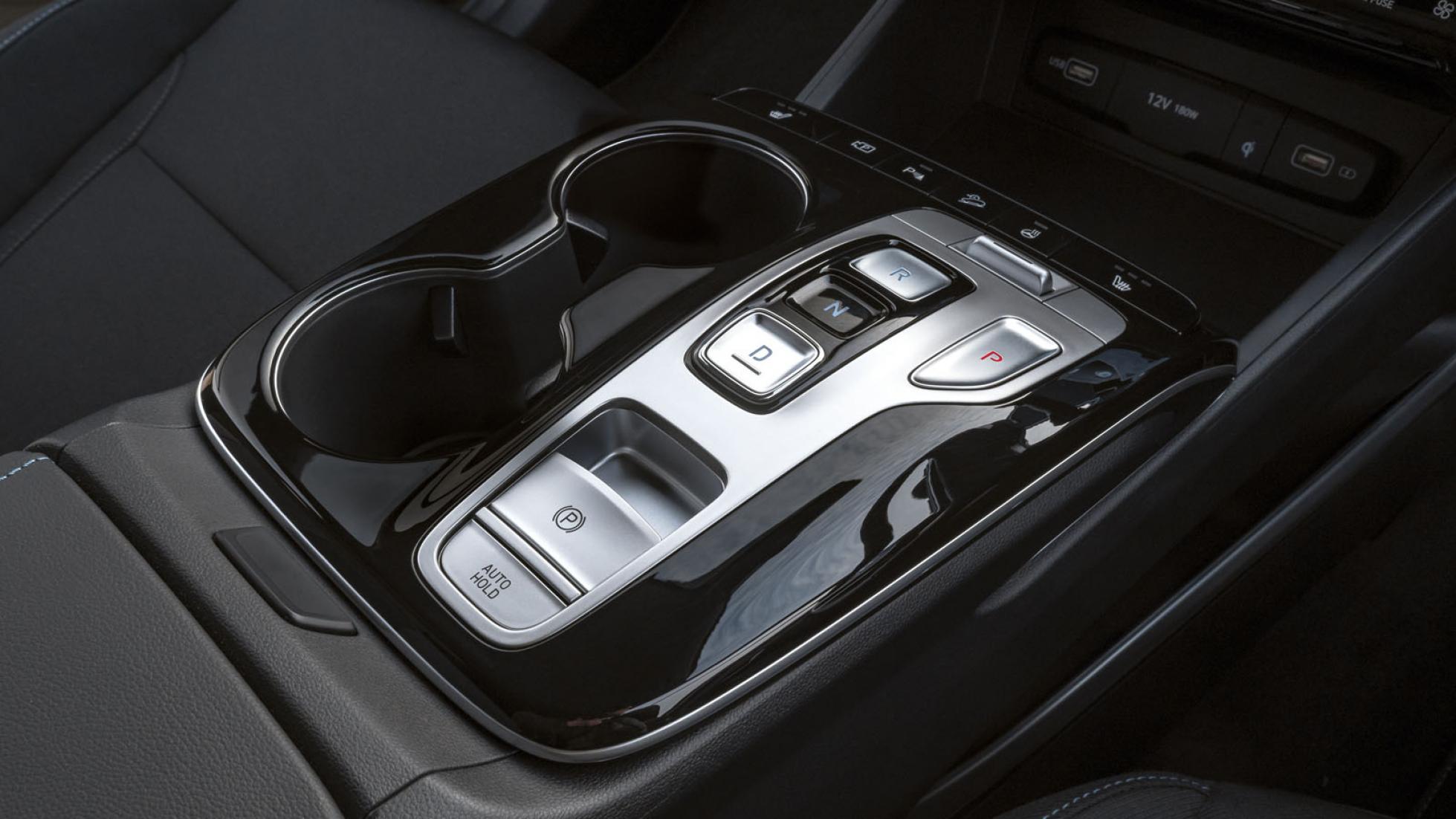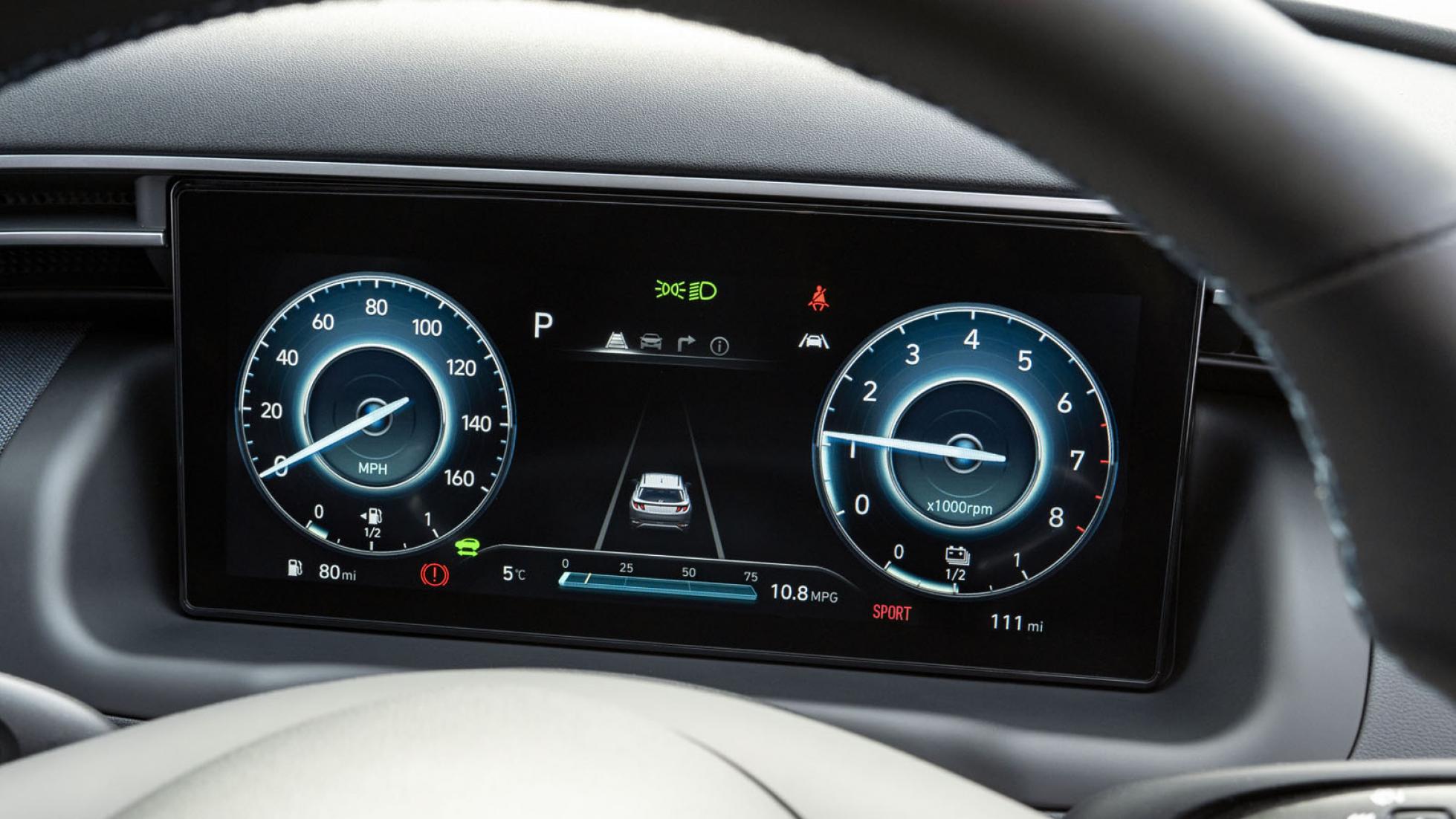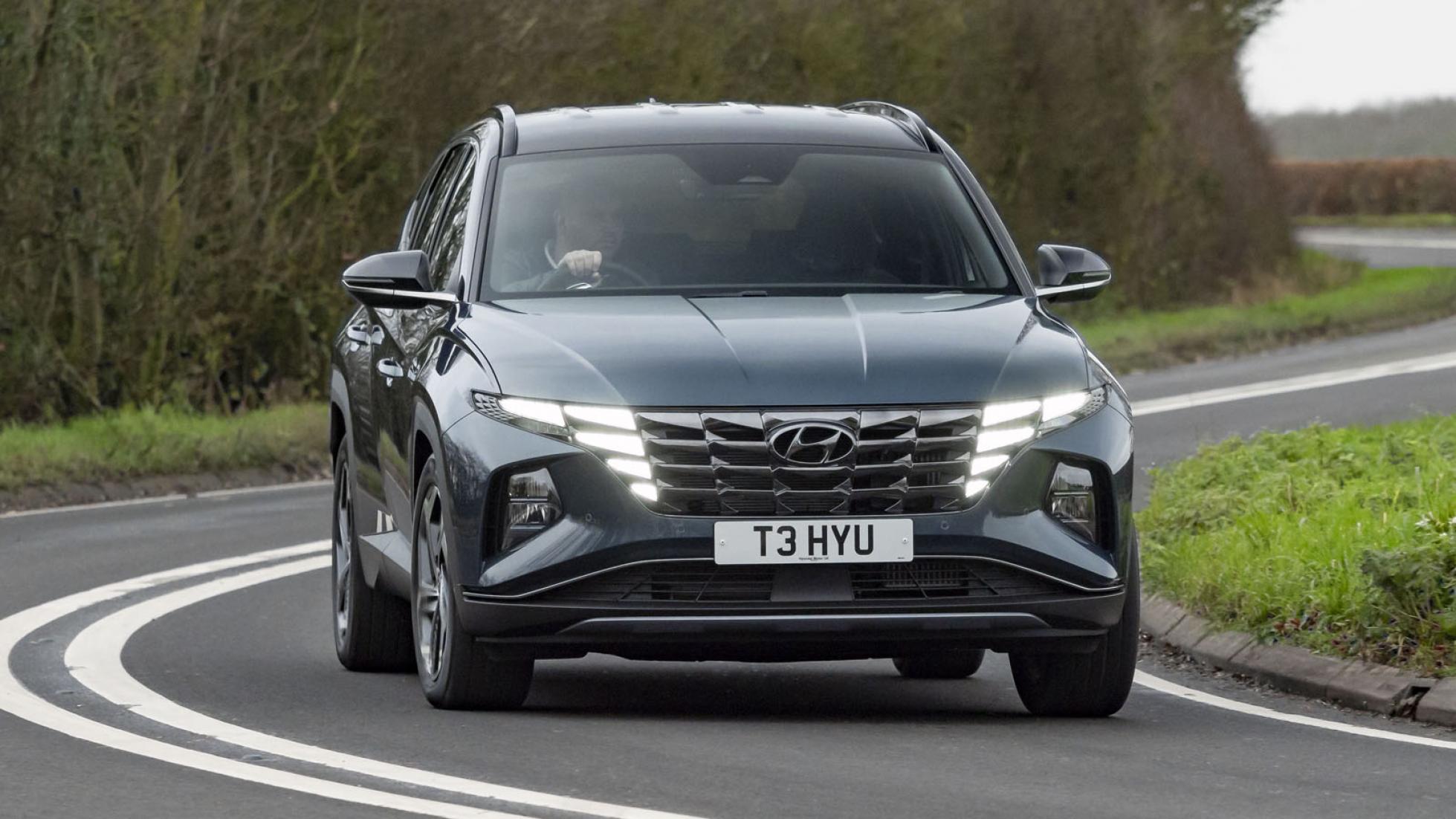
What? Did Lamborghini make a mini-Urus?
Nope. But this crossover sure has a whole lotta styling going on. The busily chiselled sheetmetal, the multi-pennant squadron of daytime running LEDs, the chrome sabre below the two-toned roof. This is a car that wants to be noticed. And this is a Hyundai.
Hyundai used to do some mad design in the early 2000s (first-generation Tiburon Coupe, Veloster, even the ix35) but it was mostly pretty awkward. This Tucson is aimed at buyers of ordinary family cars who want to stand out without looking odd. It probably hits the spot.
And inside?
Not as crazy. But it’s striking enough.
Main dash feature is a sweeping metallic double-bar that connects the dash to the doors, and visually integrates the air vents. A cloth stripe across most of the width emits further ventilation in a diffused zephyr.
Two big high-res screens stand to attention for the cluster and main centre stack. They’re easy to use and clear.
Touch-buttons do for the climate, which isn’t a total success: more like a wipe-clean microwave panel than a set of haptic controls for a car.
And underneath?
Emphatically not crazy.
I’m in a 150bhp front-drive 1.6 turbo petrol auto. Though it does save a few grammes of CO2 through a 48V mild-hybrid system. This’ll be a popular version.
You can also have a full hybrid with 230bhp. We tested that powertrain in the Kia Sorento.
Only one car in the whole range is 4WD, which is a 1.6 mild-hybrid DCT.
And, in what the late Prince would have labelled a Sign of the Times, none is a diesel.
So is the front-driver all sizzle and no steak?
Wouldn’t say that. When did you last see a family crossover in limit-cornering action? The Tucson’s dynamics feel very well tuned for the way these cars are driven. It’s unexciting, but satisfyingly well-resolved.
The steering is surprisingly weighty, with some inertia in the response, yet very little friction. And the car reacts progressively in yaw and roll. All of which is a fancy way of saying it’s easy to take a smooth, measured path that won’t make anyone sick.
It’s also stable on motorways, either unaided or when you use the very competent lane following assistance.
On tighter twisty stuff or suburban roundabouts it feels quite heavy and deliberate in its movements: a solid crossover, not an agile car. You sit high too.
The engine has variable valve duration, not just timing. It’s torquey and, thanks to the 48V starter, can do the stop-start thing very quietly in traffic. But when you do wring it out, things get a bit thrashy. So avoid the sport setting for the transmission and let it choose higher gears.
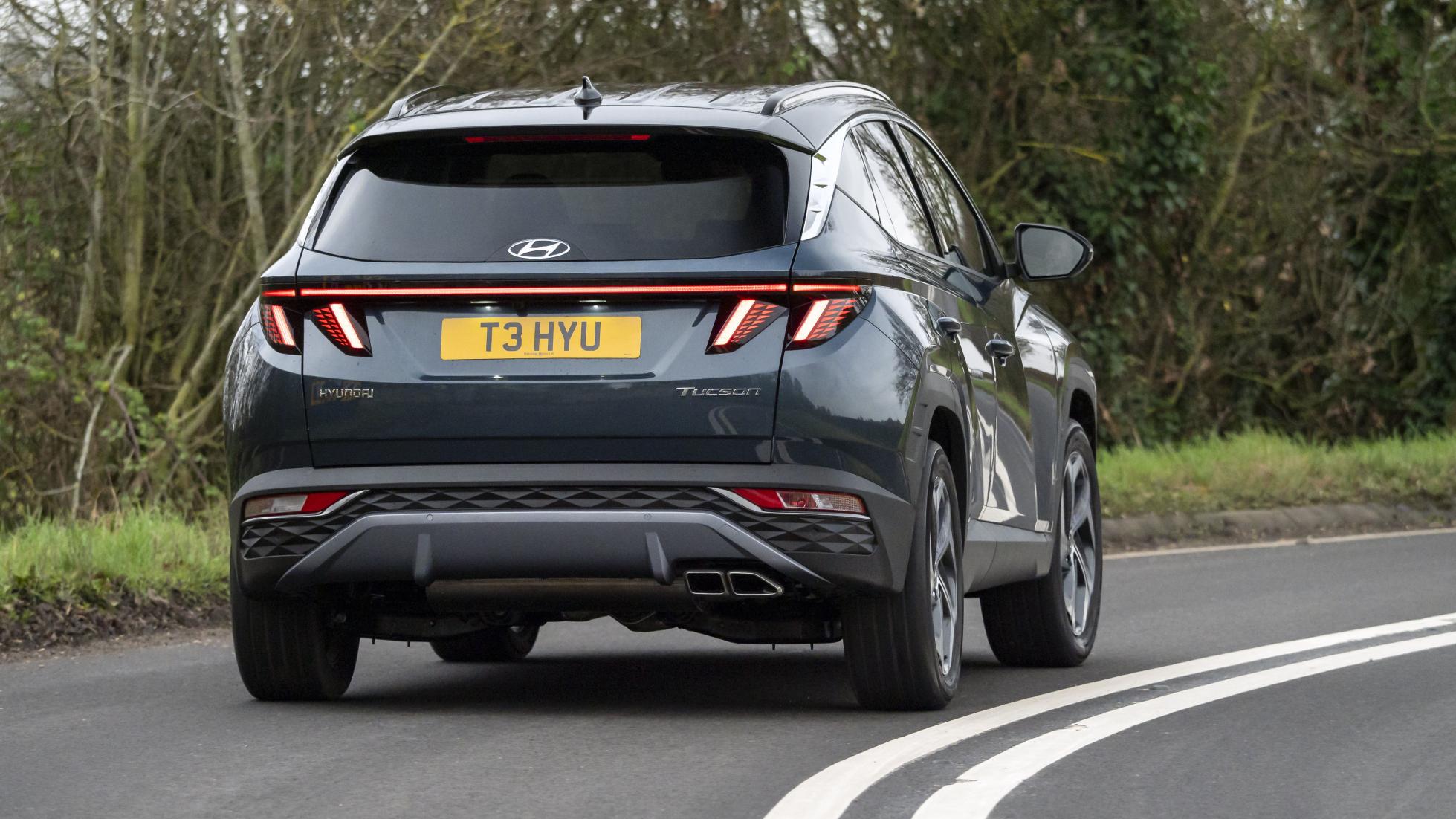
OK so while I’m driving I won’t be gnawing my knuckles in frustration. What about the passengers?
The ride’s fairly taut, which is how the body movements are controlled for the driver. A little springy too. But you can imagine it easing off with a few more passengers aboard, and in any case the suspension and tyres are never harsh or noisy.
Back-seat legroom is a bit average for the class. The boot is big front-to-back but not all that deep. In other words, like an estate’s not like a crossover’s. So (sorry to be a stuck record) why not get an estate?
Is it good value?
Well, Hyundai obviously thinks this smart cabin and desirable styling makes it fit to join the seniors. Over in the UK, the Tucson costs £35k-odd (circa RM200k) as tested in Ultimate trim. You can save by dropping the twin-clutch auto for a manual. And Premium saves more than £2,500 (RM14k) versus Ultimate. With a five-year unlimited mileage guarantee. Even so, you’re into Volvo XC40/Audi Q3 money if you want premium branding, or a BMW 318i Touring if you want premium and like driving.
But the Hyundai has a thoughtful suite of easy-to use gadgetry, and a five-year unlimited-miles warranty. If the styling tickles your fancy, it’d be an easy thing to own.


